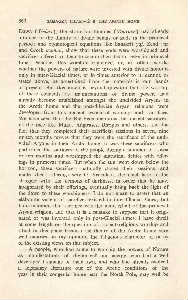Page 579 - Lokmanya Tilak Samagra (khand 2)
P. 579
360 SAMAGRA TILAK - 2 • THE ARCTIC HOME
Dawn ( U ~has ), the stonn or thunder ( Tanyatu ) had already
attained to the dignity of divine beings or gods in the primeval
period; and etymological equations like Sanskrit yaj, Zend yaz
and Greek azomai, show that these gods were worshipped and
sacrifices offered to them to secure their favour even in primeval
times. Whether this worship originated, or, in other words,
whether the powers of nature were invested with divine honours
only in inter-Glacial times, or in times anterior to it, cannot, as
stated above, be ascertained from the materials in our hands
at pre_sent. But this much is beyond question that the worship
of these elements, as manifestations of divine power, had
already become established amongst the undivided Aryans in
the Arctic home and the post-diluvian Aryan religions were
developed from this ancient system of worship and sacrifices.
We have seen that the ~ig-Veda mentions the ancient sacrificers
of the race like Manu, Angirases, Bhrigus and others, and the
fact that they completed their sacrificial sessions in seven, nine
or ten months proves that they were the sacrificers of the undi-
vided Aryans in their Arctic home. It was these sacrificers who
performed the sacrifices of the people during a summer of seven
or ten months and worshipped the matutinal deities with offer-
ings in primeval times. But when the sun went down below the
horizon, these sacrificers naturally closed their sessions and
made their offerings only to Vritrahan, the chief hero in the
struggle with the demons of darkness, in order that he may,
invigorated by their offerings, eventually bring back the light of
the dawn to these worshippers. I do not mean to assert that an
elaborate system of sacrifices existed in inter-Glacial times; but
I do maintain that sacrifice was the main ritual of the primeval
Aryan religion, and that it is a mistake to suppose that it origi-
nated or was invented only in post-Glacial times. I have dwelt
at some length on the question of ancient-religious worship and
ritual in this place because the theory of the Arctic home very
well exposes, in my opinion, the fallacious character of many
of the existing views on this subject.
A people, who had come to worship the powers of Nature
as manifestations of divine will and energy, who had a well
developed language of their own, and who had already evolved
a legendary literature out of the Arctic conditions of the
yea.r in their congenial home near the North Pole, may well be

